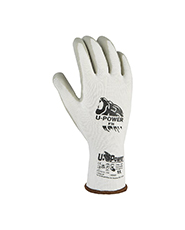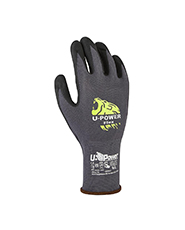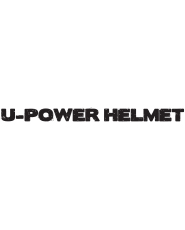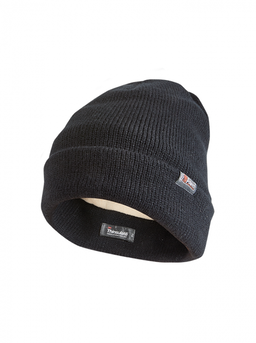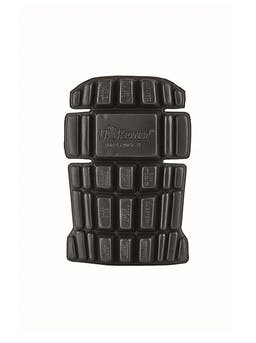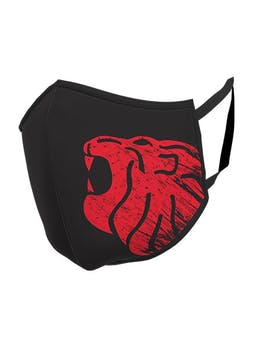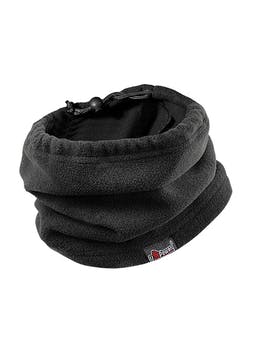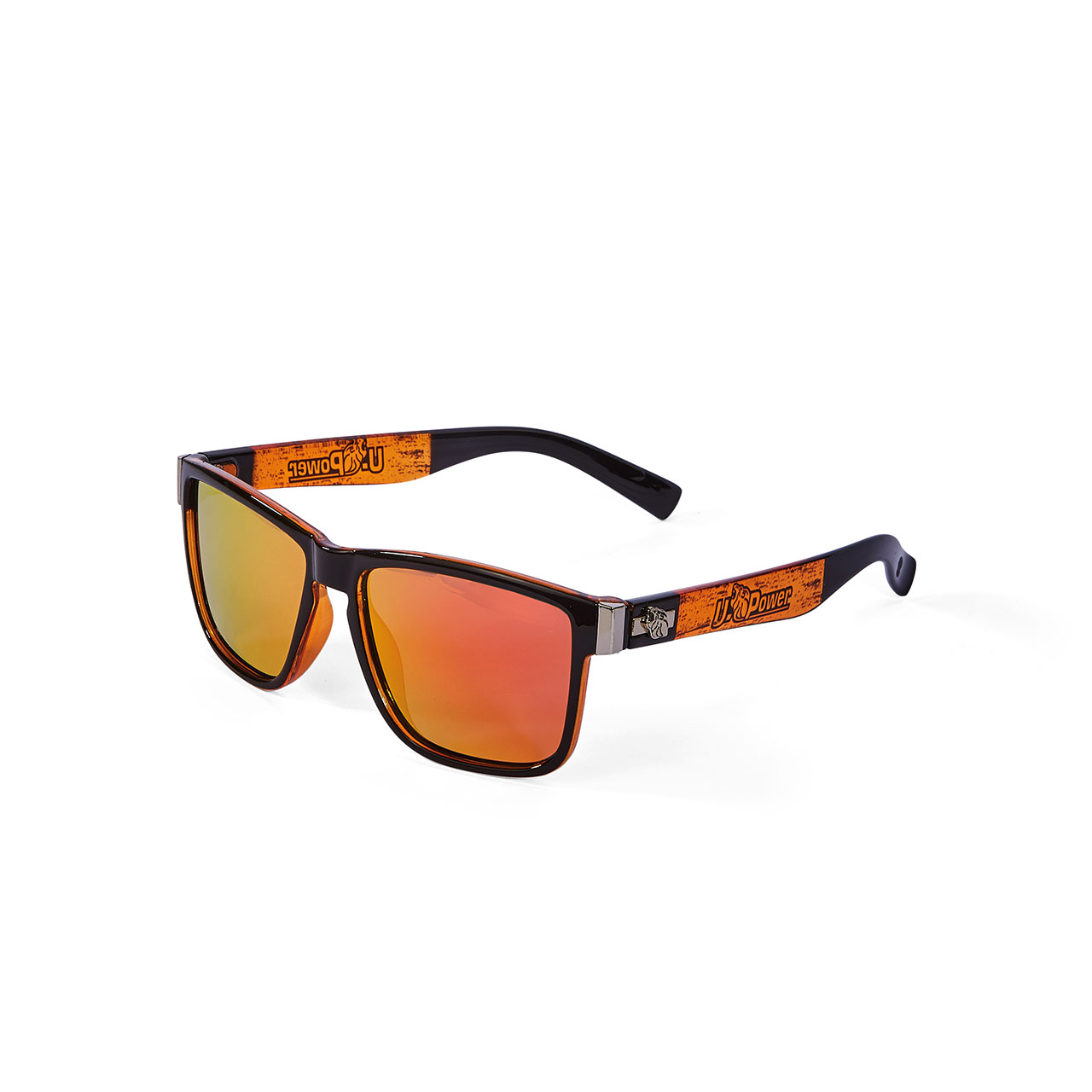EN ISO 20345:2022 and EN ISO 20347:2022 STANDARDS GUIDE
The new EN ISO 20345:2022 and EN ISO 20347:2022 standards have incorporated new, specific and additional requirements. Some have been removed or have undergone changes. Here are the new requirements:
Most important and significant features in EN ISO 20345:2022
Slip resistance (SR)
The previous slip test 'SRC' (SRA + SRB) will no longer be used, the regulation provides for a change in the procedure for performing the slip test under different conditions, called 'SR' (see table below)
Sole resistance to hydrocarbons
This requirement is optional for all protection classes. If present, it is indicated with FO in marking.
LADDER GRIP (LG)
For a better grip on the rung ladder, the sole must have a construction that complies with the requirements of the waist area according to the standard with a heel height of at least 10 mm, crampon height in the waist area of at least 1.5 mm and a waist area surface of at least 35 mm.
Puncture resistance (P, PL, PS)
Puncture resistance in footwear in this new version of the standard is divided into three different categories:
P Puncture resistance with metal insert;
PL Puncture resistance with non-metallic insert (test performed with Ø4.5mm nail);
PS Puncture resistance with non-metallic insert (test performed with Ø3.0 mm nail)
Water penetration
The additional requirement WRU (water-resistant uppers), which describes the water-repellent effect of the shoe upper, has been changed to WPA (water penetration and absorption). The upper requirements remain unchanged.
Toe abrasion resistance (SCUFF CAP)
A 'Martindale' abrasion test of 8,000 cycles is carried out to determine the abrasion of the scuff cap; the scuff cap should not develop holes throughout its thickness.
Footwear for professional use according to EN ISO 20345: 2011 is marked by an ”S” (from English Safety = Safety) as Safety Footwear. The so-called ”basic” shoe is marked with the letters ”SB” (S = Security - ”B” = Base). This shoe must have the following minimum requirements: • height of the upper • tip (minimum length, minimum support base) • upper in ”crust” leather, microfibre and similar • front lining • insole • sole in any type of material, can be smooth • the upper, in the lower shoe, can be opened in the heel area. In the ”SB” Footwear the following requirements are never understood if not specified in detail: • anti-static • energy absorption of the heel • dynamic waterproofing of the upper • sole with dowels • back lining • water-repellent upper • foil or anti-friction fabric. The following is the meaning of the stamping that you can find on the shoe.
In addition to the Basic Requirements there are others, as shown in the table below, each optional requirement indicated in the product marking corresponds to a specific associated risk protection:
PROTECTION SYMBOL | EN ISO 20345:2022 | Requirements EN ISO 20345:2022 | ||||||||||||||
|---|---|---|---|---|---|---|---|---|---|---|---|---|---|---|---|---|
| SB | S1 | S2 | S3 | S3L | S3S | S4 | S5 | S5L | S5S | S6 | S7 | S7L | S7S | Minimum values required | ||
| Closed heel area | 0 | X | X | X | X | X | X | X | X | X | X | X | X | X | The heel area must be closed | |
| Toe resistant to an impact of 200J | X | X | X | X | X | X | X | X | X | X | X | X | X | X | ||
| Toe resistant to a compression of 15 kN | X | X | X | X | X | X | X | X | X | X | X | X | X | X | ||
| A | Antistatic footwear | 0 | X | X | X | X | X | X | X | X | X | X | X | X | X | Electrical resistance >100 kΩ and ≤1000 MΩ |
| E | Energy absorption in the heel area | 0 | X | X | X | X | X | X | X | X | X | X | X | X | X | Absorbed energy ≥20 J |
| FO | Hydrocarbon resistance of the sole | 0 | 0 | 0 | 0 | 0 | 0 | 0 | 0 | 0 | 0 | 0 | 0 | 0 | 0 | Increase in volume ≤12% |
| WPA | Water absorption and penetration of uppers | 0 | − | X | X | X | X | − | − | − | − | X | X | X | X | Absorption ≤30% Penetration ≤0,2 g |
| P | Puncture resistance (with metal anti-puncture insert) | 0 | 0 | − | X | − | − | − | X | − | − | − | X | − | − | ≥1100 N |
| PL | Puncture resistance (with PL type non-metallic puncture-proof insert) | 0 | 0 | − | − | X | − | − | − | X | − | − | − | X | − | At 1100 N no perforation |
| PS | Puncture resistance (with PS type non-metallic puncture-proof insert) | 0 | 0 | − | − | − | X | − | − | − | X | − | − | − | X | Average drilling force ≥1100 NSingle drilling force ≥950 N |
| CI | Cold insulation of the sole | 0 | 0 | 0 | 0 | 0 | 0 | 0 | 0 | 0 | 0 | 0 | 0 | 0 | 0 | Temperature drop after 30 minutes at -17 °C ≤10 °C |
| HI | Heat insulation to sole | 0 | 0 | 0 | 0 | 0 | 0 | 0 | 0 | 0 | 0 | 0 | 0 | 0 | 0 | Temperature rise after 30 minutes at 150 °C ≤22 °C |
| C | Partially conductive footwear | 0 | − | − | − | − | − | − | − | − | − | − | − | − | − | Electrical resistance ≤100 kΩ |
| HRO | Heat resistance through sole contact | 0 | 0 | 0 | 0 | 0 | 0 | 0 | 0 | 0 | 0 | 0 | 0 | 0 | 0 | No signs of melting and/or breakage |
| AN | Ankle protection | 0 | 0 | 0 | 0 | 0 | 0 | 0 | 0 | 0 | 0 | 0 | 0 | 0 | 0 | Transmitted energy: average value ≤10 kN single value ≤15 kN |
| WR | Water resistance of the complete shoe | 0 | 0 | − | − | − | − | − | − | − | − | X | X | X | X | No water penetration |
| M | Metatarsal protection | 0 | 0 | 0 | 0 | 0 | 0 | 0 | 0 | 0 | 0 | 0 | 0 | 0 | 0 | Residual height after impact: measurement 41 and 42 ≥40,0 mm |
| CR | Cut resistance | 0 | 0 | − | 0 | 0 | 0 | − | 0 | 0 | 0 | − | 0 | 0 | 0 | Shear strength index ≥2,5 |
| SR | Slip resistance (ceramic top coated with glycerine) | 0 | 0 | 0 | 0 | 0 | 0 | 0 | 0 | 0 | 0 | 0 | 0 | 0 | 0 | ≥0,19 (heel 7°) ≥0,22 (tip 7°) |
| LG | Footwear suitable for ladders | 0 | 0 | 0 | 0 | 0 | 0 | 0 | 0 | 0 | 0 | 0 | 0 | 0 | 0 | Abrasion resistance of the famice and famice dimensions suitable for use on ladders |
| SC | Abrasion resistance of scuff cap | 0 | 0 | 0 | 0 | 0 | 0 | 0 | 0 | 0 | 0 | 0 | 0 | 0 | 0 | No through holes after 8000 abrasion cycles |
PROTECTION SYMBOL | EN ISO 20347:2022 | Requirements EN ISO 20347:2022 | ||||||||||||||
|---|---|---|---|---|---|---|---|---|---|---|---|---|---|---|---|---|
| SB | S1 | S2 | S3 | S3L | S3S | S4 | S5 | S5L | S5S | S6 | S7 | S7L | S7S | Minimum values required | ||
| Closed heel area | 0 | X | X | X | X | X | X | X | X | X | X | X | X | X | The heel area must be closed | |
| Toe resistant to an impact of 200J | − | − | − | − | − | − | − | − | − | − | − | − | − | − | ||
| Toe resistant to a compression of 15 kN | − | − | − | − | − | − | − | − | − | − | − | − | − | − | ||
| A | Antistatic footwear | 0 | X | X | X | X | X | X | X | X | X | X | X | X | X | Electrical resistance >100 kΩ and ≤1000 MΩ |
| E | Energy absorption in the heel area | 0 | X | X | X | X | X | X | X | X | X | X | X | X | X | Absorbed energy ≥20 J |
| FO | Hydrocarbon resistance of the sole | 0 | 0 | 0 | 0 | 0 | 0 | 0 | 0 | 0 | 0 | 0 | 0 | 0 | 0 | Increase in volume ≤12% |
| WPA | Water absorption and penetration of uppers | 0 | − | X | X | X | X | − | − | − | − | X | X | X | X | Absorption ≤30% Penetration ≤0,2 g |
| P | Puncture resistance (with metal anti-puncture insert) | 0 | 0 | − | X | − | − | − | X | − | − | − | X | − | − | ≥1100 N |
| PL | Puncture resistance (with PL type non-metallic puncture-proof insert) | 0 | 0 | − | − | X | − | − | − | X | − | − | − | X | − | At 1100 N no perforation |
| PS | Puncture resistance (with PS type non-metallic puncture-proof insert) | 0 | 0 | − | − | − | X | − | − | − | X | − | − | − | X | Average drilling force ≥1100 NSingle drilling force ≥950 N |
| CI | Cold insulation of the sole | 0 | 0 | 0 | 0 | 0 | 0 | 0 | 0 | 0 | 0 | 0 | 0 | 0 | 0 | Temperature drop after 30 minutes at -17 °C ≤10 °C |
| HI | Heat insulation to sole | 0 | 0 | 0 | 0 | 0 | 0 | 0 | 0 | 0 | 0 | 0 | 0 | 0 | 0 | Temperature rise after 30 minutes at 150 °C ≤22 °C |
| C | Partially conductive footwear | 0 | − | − | − | − | − | − | − | − | − | − | − | − | − | Electrical resistance ≤100 kΩ |
| HRO | Heat resistance through sole contact | 0 | 0 | 0 | 0 | 0 | 0 | 0 | 0 | 0 | 0 | 0 | 0 | 0 | 0 | No signs of melting and/or breakage |
| AN | Ankle protection | 0 | 0 | 0 | 0 | 0 | 0 | 0 | 0 | 0 | 0 | 0 | 0 | 0 | 0 | Transmitted energy: average value ≤10 kN single value ≤15 kN |
| WR | Water resistance of the complete shoe | 0 | 0 | − | − | − | − | − | − | − | − | X | X | X | X | No water penetration |
| M | Metatarsal protection | − | − | − | − | − | − | − | − | − | − | − | − | − | − | Residual height after impact: measurement 41 and 42 ≥40,0 mm |
| CR | Cut resistance | 0 | 0 | − | 0 | 0 | 0 | − | 0 | 0 | 0 | − | 0 | 0 | 0 | Shear strength index ≥2,5 |
| SR | Slip resistance (ceramic top coated with glycerine) | 0 | 0 | 0 | 0 | 0 | 0 | 0 | 0 | 0 | 0 | 0 | 0 | 0 | 0 | ≥0,19 (heel 7°) ≥0,22 (tip 7°) |
| LG | Footwear suitable for ladders | 0 | 0 | 0 | 0 | 0 | 0 | 0 | 0 | 0 | 0 | 0 | 0 | 0 | 0 | Abrasion resistance of the famice and famice dimensions suitable for use on ladders |
| SC | Abrasion resistance of scuff cap | 0 | 0 | 0 | 0 | 0 | 0 | 0 | 0 | 0 | 0 | 0 | 0 | 0 | 0 | No through holes after 8000 abrasion cycles |
| X | = Mandatory requirement for the specified category | |||||||||||||||
|---|---|---|---|---|---|---|---|---|---|---|---|---|---|---|---|---|
| 0 | = Optional requirement in addition to mandatory ones, if started on the marking | |||||||||||||||
| − | = Not applicable | |||||||||||||||
Below the sole the following information is indicated: - fit. On the bellows or the tongue of the shoe are affixed: - manufacturer's mark - the item code - the month and year of manufacture - the following markings: see conformity marking CE
SYMBOL | Conditions required by the standard | Friction coefficient | |
|---|---|---|---|
| Condition A ( shoe inclined towards the heel by 7° ) | ≥0,31 | ||
| Condition B ( shoe inclined towards the toe by 7° ) | ≥0,36 | ||
SYMBOL | Conditions required by the standard | Friction coefficient | |
|---|---|---|---|
SR | Condition A ( shoe inclined towards the heel by 7° ) | ≥0,19 | |
| Condition B ( shoe inclined towards the toe by 7° ) | ≥0,22 | ||
The slip resistance of footwear was tested under laboratory conditions. Additional tests by the user under workplace conditions may provide additional information. Field tests of footwear are recommended to assess fitness for work. Safety footwear EN ISO 20345:2022+A1:2024 and EN ISO 20347:2022+A1:2024: Work footwear conforming to this regulation and marked with the words '+A1:2024' attest to the most recent technical specifications relating to the breathability of the overhand. This update, identified by Addendum A1:2024, introduces updated requirements and test methods to ensure improved comfort and moisture management performance for the user. In particular, the shoes marked '+A1:2024' have passed breathability tests that verify: - The water vapour permeability, measured in mg/cm 2 h according to updated test methods. - The water vapour coefficient, which evaluates the ability of the topper material to disperse sweat according to up-to-date test methods.The inclusion of this marking ensures that the manufacturer has made the necessary changes to the production process and materials used, in line with the latest standards for breathability.Notified bodies issuing conformity certificates for work footwear are required to verify compliance with the above.
Standards requirements | distinguish footwear classified "S" (EN ISO 20345:2022 and EN ISO 20347:2022) | |||||
|---|---|---|---|---|---|
| SB | Basic requirements | Class | |||
| S1 | Closed back + A + E | I | |||
| S2 | S1 + WPA | ||||
| S3 | S2 + Sole with dowels + P | ||||
| S3L | S2 + Sole with dowels + PL | ||||
| S3S | S2 + WR | ||||
| S6 | S3 + WR | ||||
| S7 | S3L + WR | ||||
| S7L | S3S + WR | ||||
| S7S | Closed back + A + E | ||||
| S4 | S4 + Sole with dowels + P | II | |||
| S5 | S4 + Sole with dowels + PL | ||||
| S5L | S4 + Sole with dowels + PS | ||||
| SBH | / | Hybrid footwear | |||
SOLE SLIP RESISTANCE | |
|---|---|
| Marking symbol (SR) (SR) | Required conditions foreseen by the standard |
| Slip resistance on ceramic tile with water + NALS | ≥ 0.19 shoe inclined towards the heel by 7° ≥ 0.22 shoe inclined towards the toe by 7° |
| Slip resistance on ceramic tile with glycerin | ≥ 0,19 Shoe inclined towards the heel by 7° ≥ 0,22 Shoe inclined towards the toe by 7° |
epa (ESD): dissipative footwear |
|---|
These shoes have been designed to allow continuous and controlled dissipation within safety values of the electrostatic charges present on the operator's body in order to protect electronic devices sensitive to electrostatic phenomena. The recommended 'EPA' resistance to ground is ≤ 3.5x107Ω. Considering that the measurements are made with the footwear worn by the user, the values obtained can vary considerably from person to person and according to environmental conditions, since the electrical resistance of the human body is variable. |
THE SIGNIFICANCE OF EUROPEAN STANDARDS | ||
|---|---|---|
| EN ISO 20349:2010 | Small splashes of molten metal like those produced during welding operations and related processes. | |
| EN ISO 20344:2021 | Test methodology and general requirements. | |
| EN ISO 20345:2022 | Safety shoe specifications with 200 J toe resistance. | |
| EN ISO 20346:2022 | Specifications of protective footwear with 100 J toe resistance. | |
| EN ISO 20347:2022 | Specifications of ”Work footwear” or ”professional”. No specific resistance of the tip. | |
For more information: info@u-power.it





























































